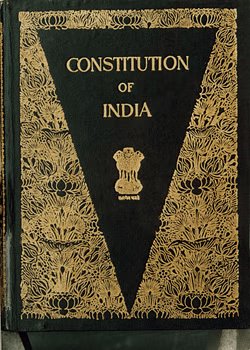Course description
The chapter on Judiciary in Class 11 Political Science focuses on the structure, functions, and significance of the judicial system in India. It highlights the importance of the judiciary as an essential pillar of democracy, ensuring justice, upholding the Constitution, and safeguarding the rights of citizens.
Key Concepts Covered:
Introduction to the Judiciary:
Understanding the judiciary as the third branch of government, along with the executive and legislature.
The role of the judiciary in upholding the rule of law and ensuring justice for all citizens.
Structure of the Indian Judiciary:
Explanation of the hierarchical structure of the judiciary, with the Supreme Court at the top, followed by High Courts and Subordinate Courts (District and Sessions Courts).
The division of powers and responsibilities between the different levels of courts.
Functions of the Judiciary:
Judicial Review: The power of the judiciary to review and strike down laws or executive actions that are unconstitutional.
Judicial Activism vs. Judicial Restraint: Understanding the debate over the proactive role of the judiciary in addressing social and political issues.
Dispute Resolution: The judiciary's role in resolving disputes between individuals, the government, and institutions.
Independence of the Judiciary:
The constitutional provisions and safeguards that ensure the independence of the judiciary, including security of tenure, appointment processes, and non-interference by the executive.
The importance of an independent judiciary in maintaining impartiality and delivering fair judgments.
Role of the Supreme Court:
The Supreme Court of India as the highest judicial authority, with powers of original jurisdiction, appellate jurisdiction, and advisory jurisdiction.
The concept of Public Interest Litigation (PIL) and its role in enhancing access to justice for marginalized sections of society.
Fundamental Rights and the Judiciary:
The judiciary’s role in protecting Fundamental Rights of citizens through judicial review and enforcing writs like Habeas Corpus, Mandamus, Prohibition, Certiorari, and Quo Warranto.
The balance between individual rights and societal interests.
Judicial Reforms:
The need for reforms in the judicial system to reduce pendency of cases, improve accessibility, and modernize court processes.
Introduction of technology in courts and measures to ensure faster delivery of justice.
Judiciary and Democratic Governance:
The judiciary’s role as the guardian of the Constitution, ensuring the functioning of a democratic society.
How the judiciary acts as a check on the powers of the executive and legislature.
একাদশ শ্রেণীর রাষ্ট্রবিজ্ঞানে বিচার বিভাগের অধ্যায়টি ভারতে বিচার ব্যবস্থার কাঠামো, কার্যকারিতা এবং তাৎপর্যের উপর দৃষ্টি নিবদ্ধ করে। এটি গণতন্ত্রের একটি অপরিহার্য স্তম্ভ হিসাবে বিচার বিভাগের গুরুত্বকে তুলে ধরে, ন্যায়বিচার নিশ্চিত করে, সংবিধানকে সমর্থন করে এবং নাগরিকদের অধিকার রক্ষা করে।
অন্তর্ভুক্ত মূল ধারণাগুলিঃ বিচার বিভাগের পরিচিতিঃ
কার্যনির্বাহী ও আইনসভার পাশাপাশি বিচার বিভাগকে সরকারের তৃতীয় শাখা হিসাবে বোঝা।
আইনের শাসন বজায় রাখতে এবং সকল নাগরিকের জন্য ন্যায়বিচার নিশ্চিত করতে বিচার বিভাগের ভূমিকা।
ভারতীয় বিচার বিভাগের কাঠামোঃ
বিচার বিভাগের শ্রেণিবদ্ধ কাঠামোর ব্যাখ্যা, শীর্ষে সুপ্রিম কোর্ট, তারপরে উচ্চ আদালত এবং অধস্তন আদালত (District and Sessions Courts).
আদালতের বিভিন্ন স্তরের মধ্যে ক্ষমতা ও দায়িত্বের বিভাজন।
বিচার বিভাগের কার্যাবলীঃ
বিচার বিভাগীয় পর্যালোচনাঃ অসাংবিধানিক আইন বা নির্বাহী পদক্ষেপগুলি পর্যালোচনা ও বাতিল করার জন্য বিচার বিভাগের ক্ষমতা।
বিচার বিভাগীয় সক্রিয়তা বনাম. বিচার বিভাগীয় নিয়ন্ত্রণঃ সামাজিক ও রাজনৈতিক সমস্যা সমাধানে বিচার বিভাগের সক্রিয় ভূমিকা নিয়ে বিতর্ককে বোঝা।
বিরোধ নিষ্পত্তিঃ ব্যক্তি, সরকার এবং প্রতিষ্ঠানের মধ্যে বিরোধ সমাধানে বিচার বিভাগের ভূমিকা।
বিচার বিভাগের স্বাধীনতাঃ
সাংবিধানিক বিধান এবং সুরক্ষা যা বিচার বিভাগের স্বাধীনতা নিশ্চিত করে, যার মধ্যে রয়েছে মেয়াদের নিরাপত্তা, নিয়োগ প্রক্রিয়া এবং কার্যনির্বাহীর হস্তক্ষেপ না করা।
নিরপেক্ষতা বজায় রাখতে এবং ন্যায্য রায় প্রদানের ক্ষেত্রে একটি স্বাধীন বিচার বিভাগের গুরুত্ব।
সুপ্রিম কোর্টের ভূমিকাঃ
মূল এখতিয়ার, আপিল এখতিয়ার এবং উপদেষ্টা এখতিয়ারের ক্ষমতা সহ সর্বোচ্চ বিচার বিভাগীয় কর্তৃপক্ষ হিসাবে ভারতের সুপ্রিম কোর্ট।
জনস্বার্থ মামলার (পি. আই. এল) ধারণা এবং সমাজের প্রান্তিক অংশের জন্য ন্যায়বিচারের সুযোগ বৃদ্ধিতে এর ভূমিকা।
মৌলিক অধিকার ও বিচার বিভাগঃ
বিচার বিভাগীয় পর্যালোচনার মাধ্যমে নাগরিকদের মৌলিক অধিকার রক্ষা এবং হেবিয়াস কর্পাস, ম্যান্ডামাস, নিষেধাজ্ঞা, সার্টিওরারি এবং কো ওয়ারেন্টোর মতো রিট প্রয়োগের ক্ষেত্রে বিচার বিভাগের ভূমিকা।
ব্যক্তিগত অধিকার এবং সামাজিক স্বার্থের মধ্যে ভারসাম্য।
বিচার বিভাগীয় সংস্কারঃ
বিচারাধীন মামলাগুলির সংখ্যা কমাতে, অ্যাক্সেসযোগ্যতা উন্নত করতে এবং আদালতের প্রক্রিয়াগুলিকে আধুনিকায়নের জন্য বিচার ব্যবস্থায় সংস্কারের প্রয়োজন।
আদালতে প্রযুক্তির প্রবর্তন এবং দ্রুত ন্যায়বিচার নিশ্চিত করার ব্যবস্থা।
বিচার বিভাগ ও গণতান্ত্রিক শাসনঃ
সংবিধানের অভিভাবক হিসাবে বিচার বিভাগের ভূমিকা, একটি গণতান্ত্রিক সমাজের কার্যকারিতা নিশ্চিত করা।
বিচার বিভাগ কীভাবে কার্যনির্বাহী ও আইনসভার ক্ষমতার উপর নজরদারি হিসাবে কাজ করে।



















